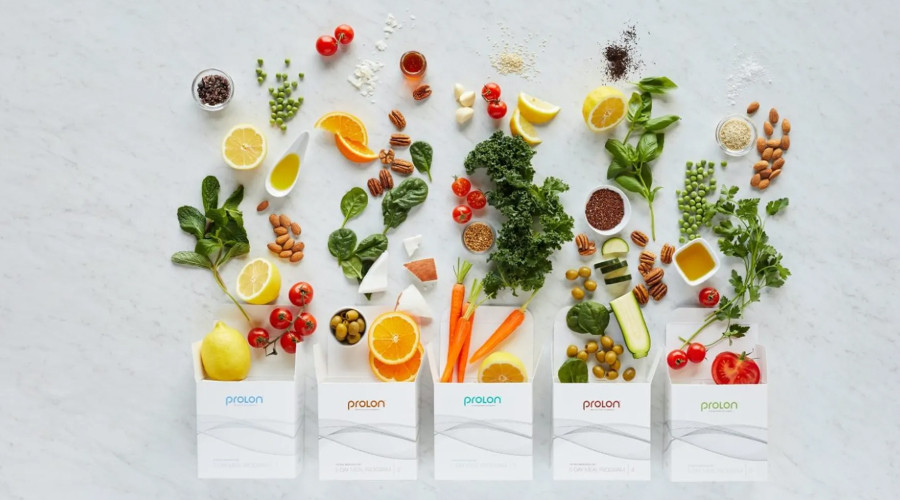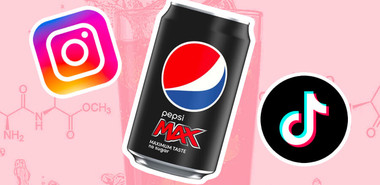
Fasting is a hot topic in the health and fitness realm. According to experts, fasting may benefit folks in various ways, such as helping with weight management and reducing the risk of age-related diseases.
Quite recently, different renditions of fasting have become quite popular. You might have heard of intermittent fasting or the fasting mimicking diet (FMD), both of which have skyrocketed in popularity.
Though these different versions of fasting revolve around setting specific limits to how much, what, or when you eat, they are not designed equally. Each form of fasting comes with its own pros and cons and suits different people with different needs.
In this article, we’ll explore what the fasting mimicking diet is, how it works, its health benefits and risks, and how you can carry out a DIY version of this diet.
What is the Fasting Mimicking Diet?

The fasting mimicking diet is a dietary plan that restricts the number of calories you consume for a certain period of time.
Created by Italian biologist Dr Valter Longo, this low-calorie, low-protein diet enables you to enjoy the health benefits tethered to fasting while ensuring that your body receives all the nutrients and nourishment it needs.
Essentially, this dietary plan tricks your body into thinking it’s in a fasted state—except that you wouldn’t have to stop eating entirely.
Because it is designed to mimic the effects of fasting, this 5-day program may help with weight loss and disease prevention.
The fasting mimicking diet is quite different from intermittent fasting. An intermittent fast will dictate when you can eat and when you can’t. But there isn’t much emphasis on restricting your calorie intake or the types of foods you can eat.
On the other hand, the fasting mimicking diet lingers more on the concept of calorie restriction and being mindful of what you consume.
How Does the Fasting Mimicking Diet Work?
The fasting mimicking diet helps to nudge your body into a state of fasting and aims to hit the sweet spot between too much and too little. This diet was designed to offer the benefits of fasting without you having to refrain from eating.
While on this diet, your body burns stored glycogen and, eventually, metabolizes fat reserves to form ketones. Essentially, your body transitions into the fasting state, where it generates energy from sources other than the foods you consume.
You’ll also receive just enough calories to keep yourself feeling satiated and content, which may prevent binging, a common repercussion of restrictive fasts.
Another key feature of the fasting mimicking diet is its ability to support a process known as autophagy. When your body is in a state of fasting, this can increase the rate of the autophagy process [1].
Autophagy is a protective housekeeping mechanism your body deploys to clean up cells and eliminate dead or damaged bits that can contribute to aging or long-term diseases [1]. Think of autophagy as a cleanup and recycling process that removes all the dead cells, junk, and waste. At the same time, this process repurposes salvageable pieces into new and healthier components.
This is why the fasting mimicking diet is said to help reduce the risk factors linked to aging and age-related diseases.
What Are the Possible Health Benefits of a Fasting Mimicking Diet?

The fasting mimicking diet lets you enjoy the positive effects of fasting without bearing the same risks.
This dietary program may be less likely to bring about side effects associated with regular fasts, such as hunger pangs, headaches, cravings, binging, and decreased alertness and focus. That said, more research is needed to prove these claims.
For many people, one of the most attractive benefits of this diet is its ability to help support weight loss.
Studies have shown that the fasting mimicking diet can help reduce weight, body mass index (BMI), waist circumference, and fat mass [2].
During this dietary regimen, your body adapts by using fat as the primary fuel and energy source, thus increasing fat metabolism through ketosis. As a result, this process can help encourage body fat loss and weight loss.
FMD also offers another advantage over conventional calorie-restrictive, weight-loss diets.
A normal dietary regimen that restricts your calories can lower your basal metabolic rate in the long run, decreasing how many calories your body can burn. Scientists believe this is why people may regain weight after going off a calorie restriction program. Plus, these regular weight-loss diets may also lead to a reduction in muscle mass and strength [3].
On the flip side, researchers have found that FMD preserves muscle mass and basal metabolic rate better than conventional calorie-restrictive dietary plans, in addition to its weight loss benefits [2].
Other than supporting healthy weight maintenance, the fasting mimicking diet is also thought to bring about the following health benefits [2, 4]:
- Reduces blood glucose levels
- Lowers cholesterol levels
- Decreases blood pressure
- Reduces inflammation in the body
- Decreases markers related to aging and cancer
- Reduces the risk of age-related health issues like cardiovascular disease
- Enhances mental clarity towards the end of the fast
Research suggests that the beneficial effects of this diet in reducing the risk of age-related diseases, diabetes, and heart diseases are even more pronounced in people who are already at risk of such medical conditions.
Despite these benefits, it’s important to note that the fasting mimicking diet shouldn’t be used to treat health conditions such as diabetes or hypertension.
How Can You Carry Out the Fasting Mimicking Diet?
The fasting mimicking diet is usually carried out over five days. During this diet, you will be consuming small, low-calorie meals containing mainly plant-based ingredients and whole foods. You will not need to fast during this diet.
People on this diet typically carry out one cycle over a month, where five consecutive days of the month will be delegated to FMD. There are no specific restrictions or instructions for the other days of the month, but it’s recommended that you stick to healthy and nutritious meals.
Healthy people looking to reap the benefits of the fasting mimicking diet may carry out three or so cycles per year, while individuals who are overweight or at risk of certain diseases may adopt this diet every month. It’s your choice how often you wish to carry out this diet.
That said, it’s best to consult a healthcare professional before starting the fasting mimicking diet, especially if you have any other medical conditions.
While on this dietary program, you will stick to specific calorie restrictions for five days.
Here’s a breakdown of the recommended caloric intake and macronutrient composition for the fasting mimicking diet.
- Day 1: ~4600kJ (~1100 calories), 11% protein, 46% fat, and 43% carbohydrate
- Days 2-5: ~3000kJ (~720 calories), 9% protein, 44% fat, and 47% carbohydrate
You can create your own meal plan based on the above breakdown. When designing your meal plan, it’s recommended that your meals be plant-based or vegan and low in calories and proteins, with a decent amount of fats and carbs.
Here’s an example of what a meal plan may look like on a day of the fasting mimicking diet:
- Breakfast: Gluten-free bagel with sliced avocados and sauteed mushrooms
- Lunch: Mixed greens salad with olive oil and lemon juice, pumpkin and banana smoothie
- Dinner: Crispy tofu bowl with nuts, onions, and quinoa, quick-boiled spinach with olive oil
Ensure you keep yourself well-hydrated throughout the day, preferably on plain fluids.
If you’re not keen on a DIY fasting mimicking diet, purchasing pre-packaged meals that cover the five-day fast is a more convenient option. We’ll explore this option further below.
Is the Fast Mimicking Diet Effective & Safe?
According to research, the fast mimicking diet can be an effective way to lose weight.
One 2017 human study found that three cycles of FMD successfully lowered body weight and total body fat. Researchers also found that it helped reduce blood pressure and insulin-like growth factor 1 (IGF-1) in participants. Low IGF-1 levels typically correlate to high insulin sensitivity, where your cells can use blood glucose more effectively, thus reducing blood sugar levels [4].
The study concluded that FMD was a safe and effective way to reduce markers and risk factors related to aging and chronic disease [4].
Of course, the efficacy of FMD will depend on various factors. For instance, the same study discovered that the beneficial effects of FMD are more significant in people already at risk of certain chronic diseases [4].
Another 2022 research study found that the fasting mimicking diet could help to reshape metabolism and antitumour immunity in participants who were diagnosed with cancer. The study further validated the safety and feasibility of FMD, on top of the already-high reported compliance rate for FMD [5].
To sum it up, the fasting mimicking diet seems to be a safe, effective, and more sustainable means of losing weight and improving wellness compared to regular calorie-restrictive and fasting diets.
What are Some Possible Risks of the Fasting Mimicking Diet?
Despite its research-backed safety and efficacy, there are still some risks tethered to adopting the fasting mimicking diet.
Though less likely to bring about side effects compared to regular fasts, FMD may still lead to adverse effects such as:
- Headaches
- Hunger pangs
- Sugar cravings
- Weakness
- Dizziness
- Fatigue
These side effects are usually mild and do not pose major concerns.
The fasting mimicking diet may not be suitable for pregnant or breastfeeding women, individuals with a history of an eating disorder or nutritional deficiencies, children, and those with certain medical conditions.
There is also a possibility that the nutritional changes made while following this diet could alter or interact with any current medications you’re on.
In any case, it’s best to consult your dietitian or healthcare professional before making any drastic changes to your diet.
Ultimately, the best wellness diet really depends on how well you can sustainably practice it.
Top Dietary Programs in Australia for Weight Loss and Enhanced Wellness
Now that you’ve understood what the fasting mimicking diet is, you may be interested in trying structured dietary programs to achieve your wellness goals.
If so, we’ve got you covered. Here’s a list of some of the best dietary programs in Australia that utilize different approaches, including FMD.
ProLon FMD Program

Based off over 20 years of scientific research, the ProLon Fasting Mimicking Diet program is the first and only patented five-day program for the fasting mimicking diet. In this program, you’ll receive five boxes (one for each day) containing plant-based meals, energy bars, soups, snacks, and drinks.
Each meal is meticulously designed and created to nourish your body, enhance metabolic health, and support cellular rejuvenation.
During this clinically-tested, five-day program, you’ll consume these pre-packaged meals in an ordered manner. And it’s recommended that you only eat what’s included in these packages for optimal results.
The ProLon program helps take the guesswork out of meal planning for a fasting mimicking diet. It also ensures that your body receives the nutrients and nourishment it needs during the five-day diet.
ProLon is also certified halal and is free from any gluten-containing ingredients.
Each five-day ProLon package is priced at ~$290, and the company recommends doing three cycles of ProLon over three consecutive months to reap its benefits. After completing the first three cycles, you may then carry out the program from time to time.
Do note that the Australian version of ProLon is slightly different from the USA product and does not currently contain the supplements NR-1 or Algal Oil. The ProLon Nutrition Program is the only dietary program on this list offering an FMD dietary approach.
CSIRO Total Wellbeing Diet
The CSIRO Total Wellbeing Diet offers a range of different programs that help support healthy weight loss and better wellness. Their core 12-week program is designed around a scientific approach to losing weight, combining online tracking tools with high-protein meals.
When you join this program, you’ll receive access to a scientifically formulated weight loss plan, delicious meal plans for singles and families, at-home exercise plans for different fitness levels, and tracking tools to keep tabs on your progress.
Their programs are priced between $199 and 299. Plus, you’ll be eligible for a refund of up to $199 if you complete the entire program!
Jenny Craig
Jenny Craig offers a range of different dietary programs that can help with weight loss or healthy meal planning.
Jenny Craig’s scientifically-proven weight loss programs help take the guesswork out of losing weight through one-on-one personalised coaching and pre-designed weekly meal plans.
Their menu consists of over 70 dietitian-designed meals that are balanced, nutritious, and healthy. You can pick from these meals to personalise your weekly menus, and these meals will be delivered right to your doorstep.
Jenny Craig’s Classic and Max Up weight loss programs are priced at ~$190+ per week.
MACROS Weight Loss Plan
MACROS is a meal provider in Australia that offers dietitian-curated and chef-prepped meals delivered right to your doorstep. These ready-made, pre-portioned meals only need to be heated up before they’re ready to eat.
The MACROS Weight Loss Plan comprises meals that are low in calories and carbs for fast-tracked success, with each meal containing less than 350 calories to support your weight loss journey. Their cheapest plan starts at ~$9.40 per meal, and you can order up to 24 meals per week.
There is no lock-in contract with MACROS, so you can pause or cancel your subscription at any time.
Workout Meals
Workout Meals is another Australian meal service provider that offers a range of transformation programs that meet different needs. You can pick between programs designed for male or female weight loss, muscle gain, or toning and sculpting.
These programs come with guidance and support from a personal nutritionist, trainer, and chef. As part of your package, you will receive fresh and healthy meals delivered right to your doorstep, in addition to personalised workout plans designed by a qualified trainer.
Kickstart Your Fitness Journey With Australia’s Top Dietary Programs
The ProLon FMD program offers a convenient and simple way to adopt the fasting mimicking diet, as it takes the guesswork out of curating your own meal plans. This program is typically best suited for healthy individuals keen on losing weight and reducing their risk of age-related diseases.
The CSIRO Total Wellbeing Diet and Jenny Craig Weight Loss Programs may be great options for those interested in a structured weight loss program.
Suppose you’re looking for specific plans that can help with muscle building, toning, or sculpting. In that case, Workout Meal’s transformation programs offer personalised guidance and training that can help you achieve your fitness goals. MACROS is another meal service provider that offers a weight loss program.
Check out our discount codes and deals for these service providers below!




